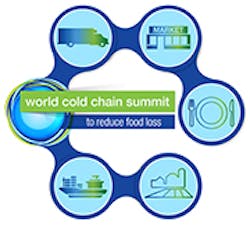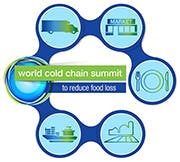Pilot study focuses on how investment in cold chain can reduce food loss, CO2E emissions
Investment in the cold chain—specifically pre-cooling and transport refrigeration equipment—can reduce food loss by 76% and carbon dioxide equivalent emissions (CO2E) by 16%.
Those are the results of a pilot study on kinnow, a type of mandarin, commissioned by Carrier and released at Carrier’s World Cold Chain Summit to Reduce Food Loss, held in Singapore recently.
The pilot study, funded by Carrier, examined the extent to which the cold chain can help increase the quality, reach and profitability of kinnow, a citrus fruit rich in micronutrients and common to the Punjab region of India and Pakistan, by enabling sales out-of-season and in distant markets. This is an area of critical importance to India, which is the world’s second-largest producer of fruits and vegetables but accounts for just 1.5% of global produce exports due to losses of up to 20% to 50% of total production.
Demonstrating positive value for all stakeholders along the supply chain, the study corrects misperceptions that the cold chain requires a complex setup from farm to retail, dependence on other stakeholders to invest along the supply chain, and a high cost of investment. The study also provides a general framework for aggregators and distributors to analyze profitability for any crop when using the cold chain.
“The cold chain, simply put, serves as a cross-geographical bridge between a rural source and distant concentrations of consumption,” said Pawanexh Kohli, chief advisor and CEO, NCCD. “The cold chain is a modern agri-logistics system that is transformational in its impact and key to bringing about the next agricultural revolution. We look forward to many more, similar pilots to demonstrate the wide-reaching advantages of the cold chain.”
Besides the economic value, the study also compared the carbon footprint of the kinnow supply chain with and without refrigeration, and determined that the cold chain can have a net decrease in overall carbon footprint when compared with the carbon emissions of kinnow that is lost or wasted.
The study measured the effects of cold storage and refrigerated transport from Abohar, in northern India to Bangalore, in southern India, a roughly 2,500-km (1,600-mile) overland journey that is a four- to five-day drive by truck. This allowed for ample analysis of time- and distance-related aspects of cold chain investment. Unlike other fruits, kinnow is available only for three to four months a year, is highly perishable and is grown primarily in a few districts of Punjab. To keep spoilage to a minimum, kinnow is best kept at 4 to 5 degrees Celsius and a relative humidity of 85% to 90%. Increasing yield and acreage has meant that production is too large for the local market, but there are challenges in distribution to markets that are further away.
This study demonstrated that the payback for pre-cooling equipment is only about two years, while for refrigerated trucks it is just over four years. Government incentives, which were not included in the study, would only further serve the attractiveness of the investment.
Profitability was assessed comparing four monthly scenarios for the selling season, from January-March: two scenarios using open trucks (no refrigeration) for January (scenario 1) and February (scenario 2), and two scenarios using refrigerated trucks only in February (scenario 3), and cold storage and refrigerated trucks in March (scenario 4).
The study also assessed the carbon footprint of supply chain activities and found that in comparison with greenhouse gas emissions from kinnow spoilage, cold chain intervention reduced overall CO2E emissions by 16% comparing February sales using an open truck (scenario 2) with March sales using a refrigerated truck (scenario 3). There was a 7.5% reduction in CO2E emissions between February (scenario 2) and March (scenario 4), allowing for the combined usage of cold storage and refrigerated truck.
Go to www.naturalleader.com to review the full India pilot study. Learn more about reducing food waste by accessing www.Carrier.com.

